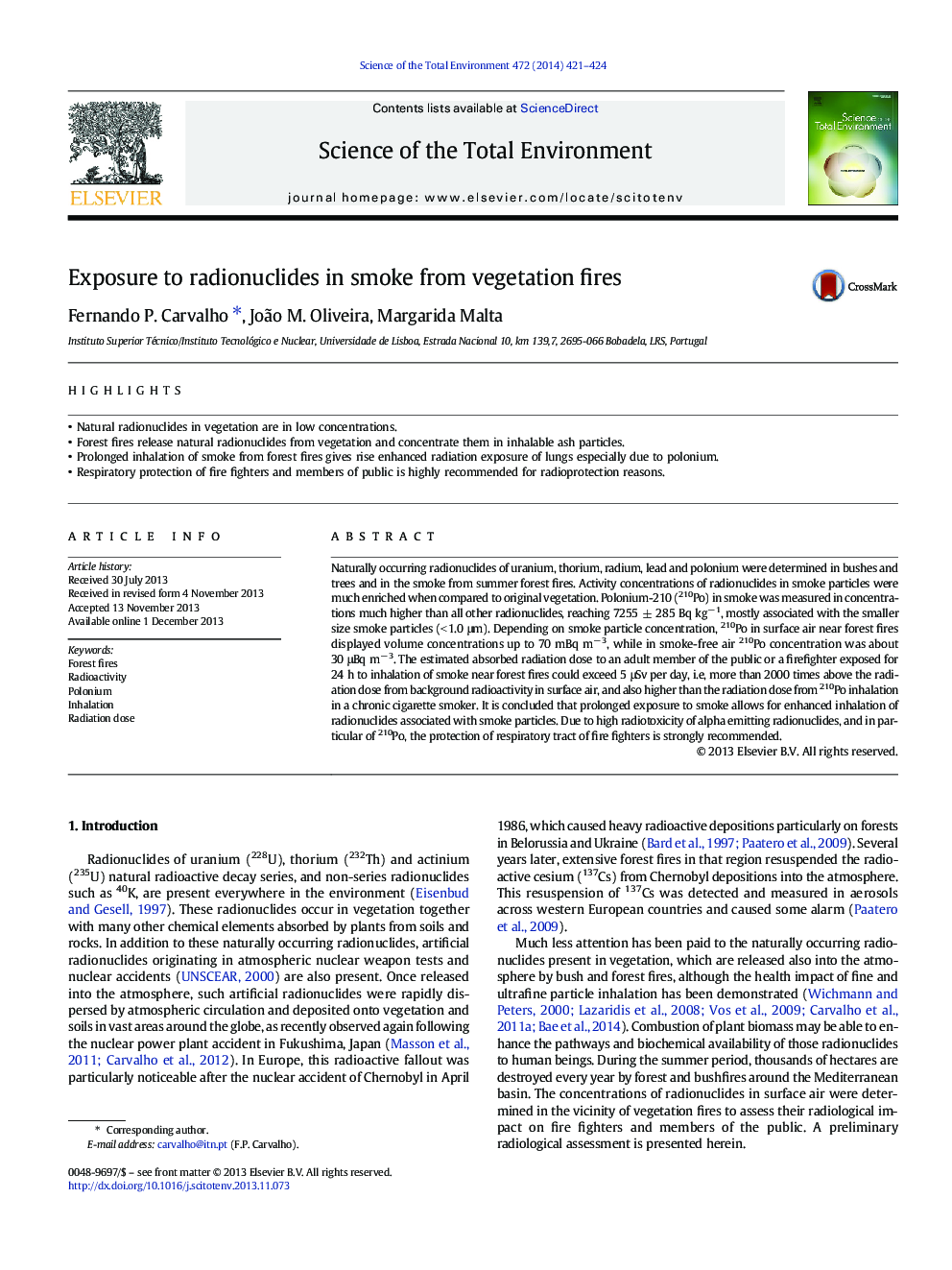| Article ID | Journal | Published Year | Pages | File Type |
|---|---|---|---|---|
| 6331157 | Science of The Total Environment | 2014 | 4 Pages |
Abstract
Naturally occurring radionuclides of uranium, thorium, radium, lead and polonium were determined in bushes and trees and in the smoke from summer forest fires. Activity concentrations of radionuclides in smoke particles were much enriched when compared to original vegetation. Polonium-210 (210Po) in smoke was measured in concentrations much higher than all other radionuclides, reaching 7255 ± 285 Bq kgâ 1, mostly associated with the smaller size smoke particles (< 1.0 μm). Depending on smoke particle concentration, 210Po in surface air near forest fires displayed volume concentrations up to 70 mBq mâ 3, while in smoke-free air 210Po concentration was about 30 μBq mâ 3. The estimated absorbed radiation dose to an adult member of the public or a firefighter exposed for 24 h to inhalation of smoke near forest fires could exceed 5 μSv per day, i.e, more than 2000 times above the radiation dose from background radioactivity in surface air, and also higher than the radiation dose from 210Po inhalation in a chronic cigarette smoker. It is concluded that prolonged exposure to smoke allows for enhanced inhalation of radionuclides associated with smoke particles. Due to high radiotoxicity of alpha emitting radionuclides, and in particular of 210Po, the protection of respiratory tract of fire fighters is strongly recommended.
Related Topics
Life Sciences
Environmental Science
Environmental Chemistry
Authors
Fernando P. Carvalho, João M. Oliveira, Margarida Malta,
